South African Architects Directory
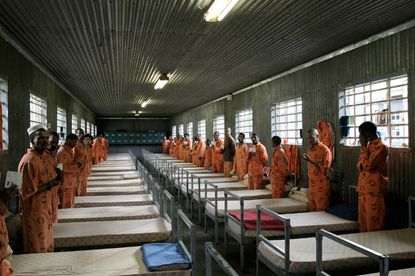
Few understand the challanges and opportunities of contemporary South Africa better than its architects. Urban planning and improvements in infrastructure and transport links are priorities for a country still facing massive social and economic problems. Developments are happening, if not at the pace many would like.
In this month's issue of Wallpaper* we present some of the architects building bridges and rebuilding South Africa. While on wallpaper.com, we take a deeper look at these practices, dipping into their past portfolios and looking at their future work.
Photographer Mikhael Subotzky
Copyright Magnum Photos

Delmas. 2005. Ex-prisoner Joseph has his eyes tested.

Cape Town. 2005. Ex-prisoner Marc cleans Hout Bay Beach.
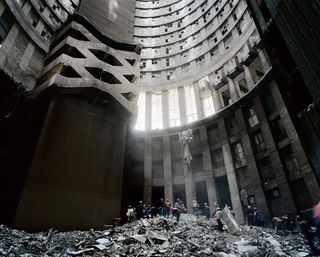
Beaufort West, 2006.
At the half-way point along South Africa’s great highway – the N1 running from Cape Town to Johannesburg – lies the small town of Beaufort West. With its prison in the middle of town, on an island in the highway, it’s a surreal road-stop that offers everything a traveler might want – food, gas, a place to stay, an hour of sex... Mikhael Subotzky considers the town, its vivid characters and poignant social landscapes, in a photo essay that confronts central issues of contemporary South African society.
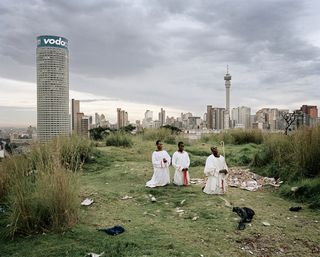
Beaufort West. 2006.
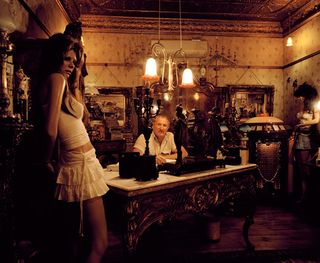
Beaufort West. 2006. Mr Roussouw, antique dealer.
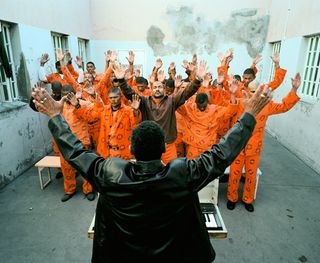
Beaufort West. 2006, Sunday church service, Beaufort West Prison.

Beaufort West. Diorama, Chris Barnard Museum, 2008.

Beaufort West. 2006. Gang meeting, Beaufort West Prison.

Beaufort West. 2006. Oom Giepie.

Beaufort West. 2006. Beaufort West rubbish dump.
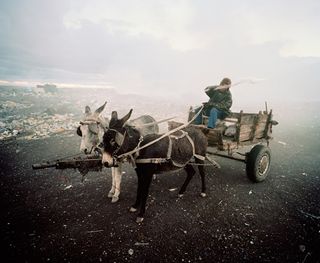
Beaufort West rubbish dump. 2006.

South African Architects Directory
Paragon architects
Department of Arts, Culture, Science and Technology of South Africa (DACST)
The bar has been raised in institutional head office design in South Africa, with the recently completed design for the national department of Arts, Culture, Science and technology by Paragon Architects.
The plan arrangement consist of three long rectangular interlinked blocks, arranged like a lazy ‘Z’ across the floor of the site. Gently folded strips of concrete floor plates define the silhouette and the visible edges of the building’s form. Vast cut-outs in the planted rooftop landscape pour light deep into the courtyards defined by the blocks of offices. Cavernous performance spaces are shaped at key intersection points in the building’s layout.
The entire site is intensively landscaped and entry to the building is through planted areas, across sheets of water, and through forests of columns placed at rakish angles, into the belly of the building. The material palette is kept simple and almost spartan, and form becomes the dominant element of expression.
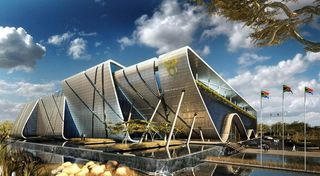
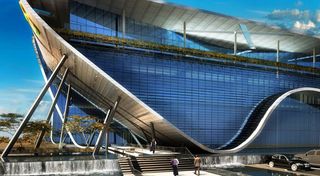

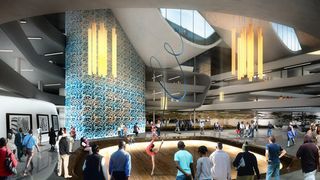
Paragon Architects
T-Systems head office, Centurion, Pretoria/Tshwane
Scheduled for construction in the second half of 2011
Wallpaper* Newsletter
Receive our daily digest of inspiration, escapism and design stories from around the world direct to your inbox
Information Technology company T-Systems currently operates from a head office building designed in 2004 by Paragon Architects, and is now looking to accommodate its growing needs in another Paragon-designed environment. The design continues the sharp-edged, folded-plate silhouette of the existing head office, but internally has a much more complex assembly of sculptural forms and spaces.

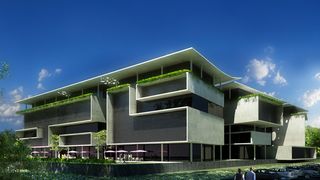
Studio Mas Architects
The Highveld Pavilion
This private guest cottage is situated in a lush smallholding along the Vaal River in Vanderbjlpark, south of Johannesburg. The buildings function is as garden pavilions, with open entertainment areas that also provide weekend accommodation. The building maximises the scenic surrounding by providing complete visual connection between the interior spaces and the surrounding landscape.
The building consists of two parallel blocks set within the densely treed landscape. They are connected by a garden wall along their eastern façades, creating an intimate courtyard space. The illusion of being completely outside while inside is enhanced by the use of frameless glazing on all sides as well as seamless external floor finishes. Bedroom suites feature open plan bathrooms as well as an intimate television lounge. Laser cut artworks by Willem Boschoff slide across the façade, providing an interesting and beautiful solution for adjustable privacy.
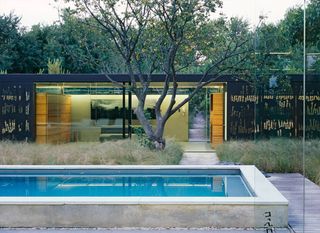
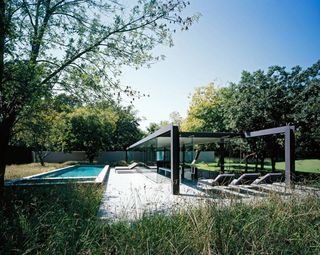
Studio Mas Architects
The Hamilton Hotel
The brief was for a boutique hotel with the comforts of home, but where all the requirements of the most demanding businessman are addressed; space efficient design that maximised use of a relatively small site.
The hotel, commissioned by private developers, is located in the leafy suburb of Craighall Park. It is designed to look like a residential building but still creates a bold presence demanding attention and interaction.
The building is located on a small corner stand and consists of a linear plan with two wings. The ground floor forms the public space of the hotel with the lobby between the dining room on one side and boardrooms on the other. The public space spills over into two private courtyards, which are used for functions as well as recreational space. The floors above consist of several private suites with en-suite bathrooms, a feature of which are the bay windows which puncture the façade and allow the users an opportunity to step out of the building and into the public domain, albeit only on a visual level.
The materials explored in this design once again relate to minimising building costs; therefore steel roof sheeting was used and timber trusses became a design feature. The design uses tyrolean wall finishes, allowing for the growth of creepers on part of the walls, creating a changing façade overtime.
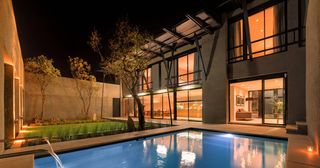
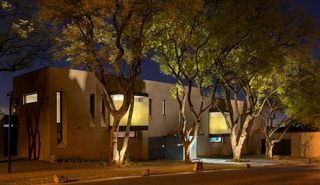
MMA Architects
Ellis Park Precinct Upgrade 2007
The Ellis Park Urban Development Framework is part of the Inner City Revitalization of the City of Johannesburg. The location of two stadiums in the middle of the city is a unique urban condition that has to be taken advantage of. In regards to the World Cup 2010, with Ellis Park hosting a number of World Cup games, the urban framework prepared the city for this huge event of global attention. At the same time the proposed structures will cater for a large number of citizens after the event. The inner city of Johannesburg has undergone radical change after the apartheid area officially ended. Today, ten years later, planners and city government aim for integration and bringing back urban life into the streets that should be enjoyed by a large number of citizens.

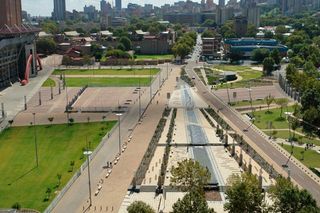
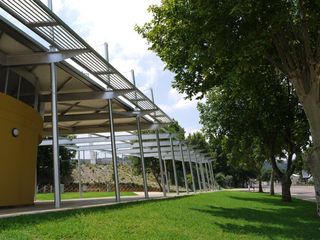

MMA Architects
South African Embassy, Berlin, 2003
The re-unification of Germany and the liberation of South Africa in the nineties resulted in the need for a new South African Embassy in Berlin. The chancery is located between the recently completed Indian embassy and the yet to be built embassy of Turkey. The urban design framework for Berlin is based on the recreation of its neo-classical past and the ‘villa type’ developments, with 10m between buildings prescribed in this street in order to maintain the park-like surroundings.
The location of the site determined the conceptual departure of the scheme. The building opens out to both sides, the north opening being on axis with a memorial to Otto Wagner. The south opening is off axis and focuses onto a sculpture by South African artist Speelman Mahlangu as a counterpoint. The confluence of these two (German and South African) axis is at the main central gathering and exhibition space.
The concept of confluence is used to further elaborate the design, primarily through integration of the Berlin ‘hof’ and African ‘khotla’ - German technology and African attitudes to adornment; Berlin town planning and African massing and proportions. A sun-drenched South African natural sandstone is used externally, offset by a granite base and aluminum ‘bangles’. These are meant to unify the diverse artistic and cultural references contained within the building, which are reflective of all South Africa’s people. The design mediates between images of South Africa’s turbulent political past and tourist present and provides an image appropriate to an efficient modern South African administration in the global arena.
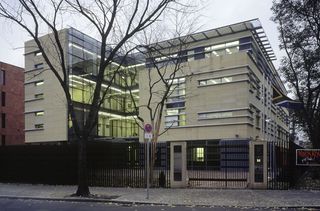
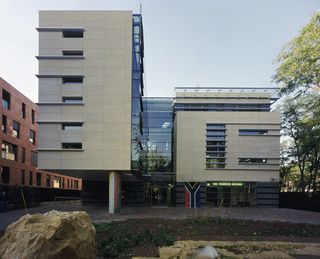
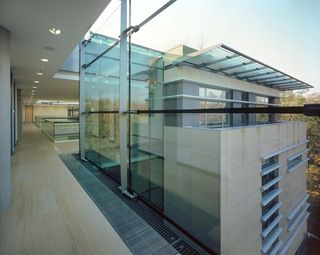
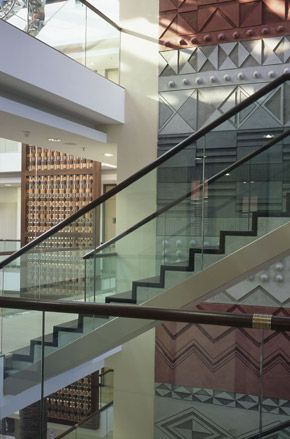
Mashabane Rose Associates
Oprah Winfrey Leadership Academy for Girls
A new 450 student boarding high school designed with an African spirit to encourage and nurture the learners from all parts of South Africa. The library and quadrangle are at the centre of the school with the learning and living environments extending in two arms into the landscape setting.

Mashabane Rose Associates
University of Johannesburg
A new 400 seat concrete shell Theatre and Art Gallery designed around a green gathering space/square.
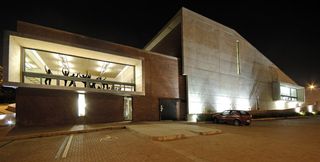
Dieter Brandt
Namibian-born Dieter Brandt is collaborating with MMA Architects on this library design for a Science University in Central Africa.



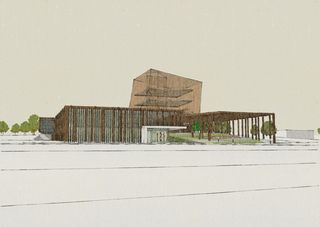

26'10 South Architects
River House, Denysville, Free State
This house has been designed for week-end use and eventually early retirement for a family currently living in Johannesburg. The site is located on the Free State side of the Vaal River and has been extensively quarried for gravel prior to the flood line being established in the 1970's. This has resulted in much of the site being rendered unbuildable. The clients' desire for a long, north facing, single storey structure resulted in the western edge of the house projecting over the flood line. The natural depression in the ground at this point was slightly lowered to serve as a carport.
The folded plane of the roof is functionally derived and aesthetically fine-tuned to create a modulated form that mirrors the horizon on the north but rises up to announce the house to visitors approaching from the south. Red, earth-coloured, brick walls without visible lintels and subtle window sills form a monolithic base capped by the thin metal plane of the roof.
The existing trees, flood line and contours provided the parameters for the positioning of the house and informed proposals for landscaping including the siting of a concealed access track to the boat launch which is located between two tall existing trees.

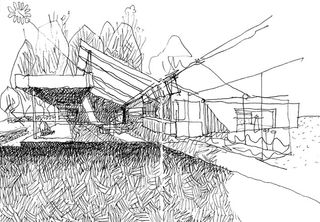

26'10 South Architects and Lindsay Bremner
Sans Souci Cinema Project, Soweto, Johannesburg
In the absence of a budget and local capacity to re-build the famous Sans Souci Cinema in Soweto, Johannesburg, the content, rather than the container, was realised. The cinema building was destroyed in a fire in 1994 and subsequently pillaged for building materials resulting in an evocative ruin used as an informal public space by the local youth. 26'10 South Architects' brief from the Kliptown Our Town Trust was to re-imagine the Sans Souci as a cultural public space. Through a series of workshops and events, the remains of the cinema were animated as a space of cultural happening and meaning over a period of several years. A film festival, dance outreach project and several performances were held during this time. These events employed the ruin as urban armature and were curated together with the community.
Through their practice as architects in a need-based context in which resources are scarce, 26'10 had to discover, for themselves, the value in the directness and immediacy of informality. By harnessing informal processes, they are finding new ways in which to make positive and interactive public spaces. Rather than abandoning their clients in the light of limited budgets, they have pooled human resources through combined networks in order to realise their mandate of creating a public space for cultural programme.
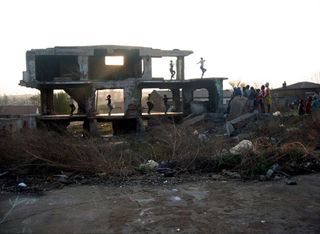
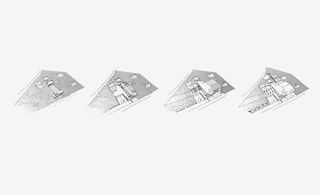

-
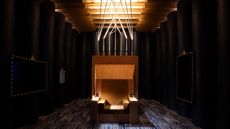 David Lynch presents 'A Thinking Room' at the Salone del Mobile
David Lynch presents 'A Thinking Room' at the Salone del MobileHere's a first look at the David Lynch Salone del Mobile 2024 installation, a cinematic experience within the fair curated by Antonio Monda
By Laura May Todd Published
-
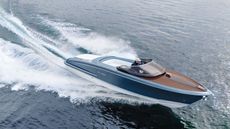 Riva El-Iseo is the legendary boat builder’s first fully-electric motor yacht
Riva El-Iseo is the legendary boat builder’s first fully-electric motor yachtThe Riva El-Iseo electric speedboat blends classic Italian lines with a silent, powerful and zero-emission powertrain
By Jonathan Bell Published
-
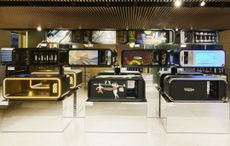 Technogym Home Bench 40 ways: designers interpret the home exercise classic
Technogym Home Bench 40 ways: designers interpret the home exercise classicTechnogym marks its 40 anniversary with 40 special editions of its Home Bench created in collaboration with international creatives
By Rosa Bertoli Published